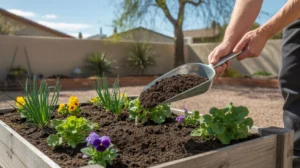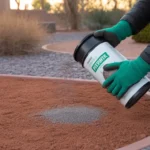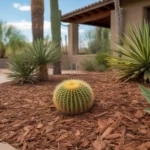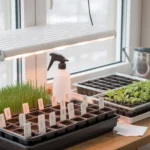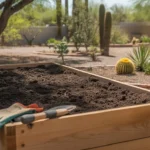As the weather warms and spring arrives in Gilbert, eager gardeners often reach for the fertilizer, hoping to give their plants a boost. But before you start spreading, it’s important to separate fertilization fact from fiction. Many common myths about spring feeding can actually do more harm than good.

Myth #1: Fertilize as soon as possible in spring
One of the most persistent myths is that you should fertilize your garden beds the moment spring arrives. However, most plants are still waking up from winter dormancy in early spring. Their roots aren’t actively growing yet, so they can’t efficiently absorb the nutrients from fertilizer.
In fact, applying fertilizer too early can lead to fertilizer burn, especially if we get a late cold snap. It’s best to wait until soil temperatures have warmed to at least 55°F and you see active new growth on your plants before fertilizing. In Gilbert, that’s typically late March to early April.
Myth #2: More fertilizer is always better
Another common misconception is that heaping on the fertilizer will supercharge your plants for faster, lusher growth. But over-fertilizing can actually “burn” tender roots, especially if you’re using synthetic fertilizers that are high in salts.
Always follow the application rates on the package, and err on the side of using less rather than more. For most established perennials and shrubs, one or two light applications of a balanced, slow-release fertilizer per season is plenty. Annuals and heavy feeders like roses may appreciate a monthly dose.
Myth #3: All plants need spring feeding
While it’s a good general practice to fertilize in spring, not every plant in your yard will benefit. Native and desert-adapted plants like chuparosa, penstemon, and many salvias have low fertility needs. They’ve evolved to thrive in lean, well-draining soils without much supplemental feeding.
Over-fertilizing these plants can lead to spindly growth, fewer flowers, and even shortened lifespans as they outgrow their natural habits. For natives and xeric plants, a light layer of compost as mulch is usually sufficient. Skip the stronger stuff unless you see clear signs of nutrient deficiency like yellowing leaves.
Focus on soil health first
Rather than relying on fertilizers to provide a quick fix, the best way to promote a healthy, productive garden is to prioritize soil health. Gilbert soils tend to be alkaline and low in organic matter. Amending with compost, using organic mulches, and planting cover crops in fallow beds will improve soil structure, moisture retention, and fertility over time.
When you do need to fertilize, opt for slow-release organic formulas that gently nourish plants and feed beneficial soil life too. With a little know-how and restraint, you can keep your garden growing strong all season long – without falling for pesky fertilizer myths.

